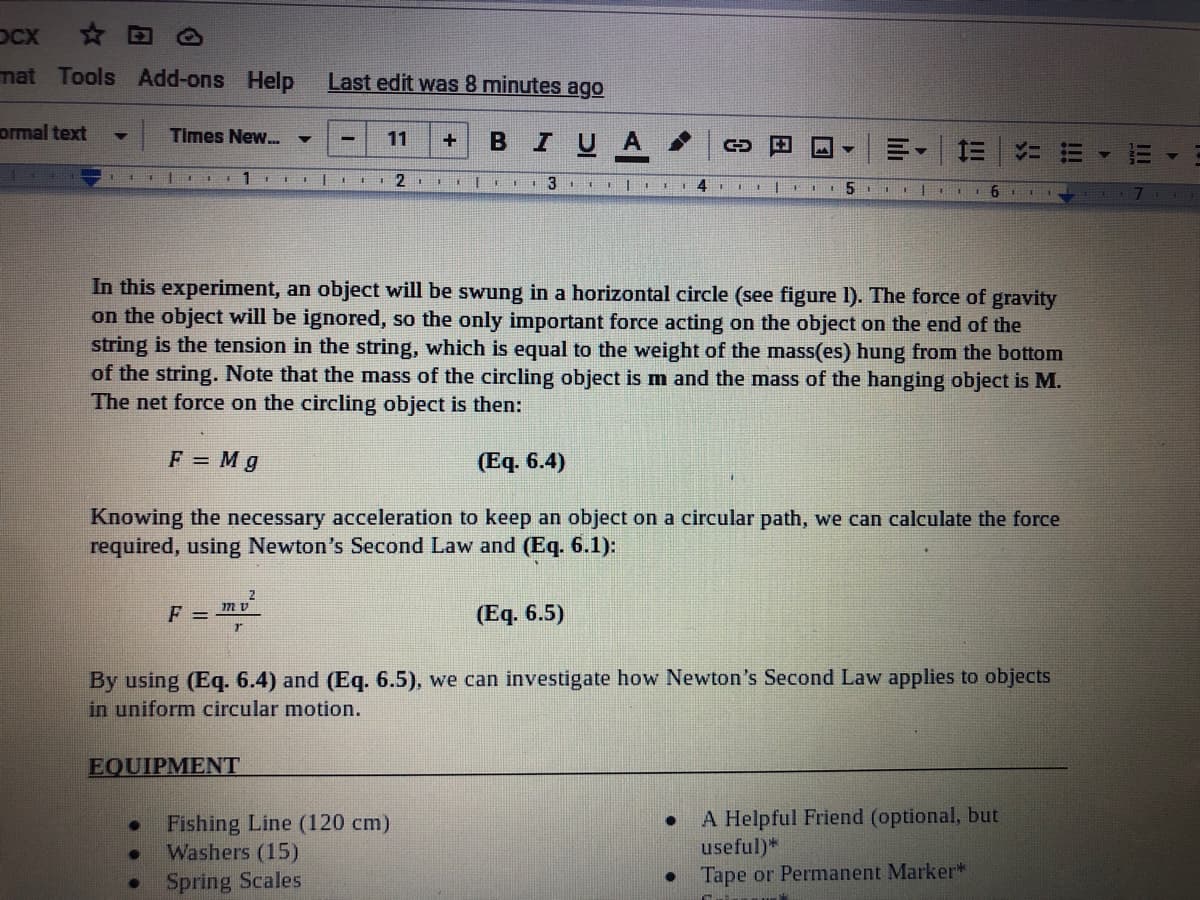Chapter1: The Study Of Motion
Section: Chapter Questions
Problem 21Q: (Indicates a review question, which means it requires only a basic understanding of the material to...
Related questions
Question
Can I see a random example of how you could set eq 6.4 and 6.5 equal to each other to find an expected speed. Thank you

Transcribed Image Text:OCX
mat Tools Add-ons Help
Last edit was 8 minutes ago
ormal text
BIUA
Times New.
11
三
I | II5
In this experiment, an object will be swung in a horizontal circle (see figure l). The force of gravity
on the object will be ignored, so the only important force acting on the object on the end of the
string is the tension in the string, which is equal to the weight of the mass(es) hung from the bottom
of the string. Note that the mass of the circling object is m and the mass of the hanging object is M.
The net force on the circling object is then:
F = Mg
(Eq. 6.4)
Knowing the necessary acceleration to keep an object on a circular path, we can calculate the force
required, using Newton's Second Law and (Eq. 6.1):
F = mv
(Eq. 6.5)
By using (Eq. 6.4) and (Eq. 6.5), we can investigate how Newton's Second Law applies to objects
in uniform circular motion.
EQUIPMENT
Fishing Line (120 cm)
Washers (15)
A Helpful Friend (optional, but
useful)*
Tape or Permanent Marker*
Spring Scales
II
Expert Solution
Step 1

Step by step
Solved in 2 steps with 2 images

Knowledge Booster
Learn more about
Need a deep-dive on the concept behind this application? Look no further. Learn more about this topic, physics and related others by exploring similar questions and additional content below.Recommended textbooks for you


Glencoe Physics: Principles and Problems, Student…
Physics
ISBN:
9780078807213
Author:
Paul W. Zitzewitz
Publisher:
Glencoe/McGraw-Hill

Horizons: Exploring the Universe (MindTap Course …
Physics
ISBN:
9781305960961
Author:
Michael A. Seeds, Dana Backman
Publisher:
Cengage Learning


Glencoe Physics: Principles and Problems, Student…
Physics
ISBN:
9780078807213
Author:
Paul W. Zitzewitz
Publisher:
Glencoe/McGraw-Hill

Horizons: Exploring the Universe (MindTap Course …
Physics
ISBN:
9781305960961
Author:
Michael A. Seeds, Dana Backman
Publisher:
Cengage Learning